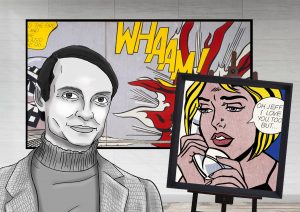
29 interesting facts about pop art
- 👁️ 2326
Pop Art emerged as a significant art movement in the mid-20th century, particularly in the United States and Britain. Characterised by its use of imagery from popular culture, mass media, and advertising, Pop Art challenged traditional fine art by including imagery from everyday life. It aimed to blur the lines between ‘high’ art and ‘low’ culture and offered a fresh perspective on what could be considered artistic. Major figures of the movement included Andy Warhol, Roy Lichtenstein, and Jasper Johns. Below are 29 facts that delve into the colourful and influential world of Pop Art.
- The term “Pop Art” was first coined by British art critic Lawrence Alloway in 1954.
- Pop Art was a reaction against the subjective and emotional nature of Abstract Expressionism.
- Andy Warhol’s Campbell’s Soup Cans series is one of the most iconic works of Pop Art.
- Roy Lichtenstein was known for his comic strip-inspired paintings that utilised Ben-Day dots.
- Pop Art explored the relationship between artistic expression, advertising, and celebrity culture.
- Richard Hamilton’s collage “Just what is it that makes today’s homes so different, so appealing?” (1956) is considered one of the first works of Pop Art.
- The movement was influenced by Dadaism, which also used everyday objects in art.
- Pop Art was prominent not just in the United States and Britain but also had variations in countries like Japan and Argentina.
- Andy Warhol’s studio, known as “The Factory,” was a famous gathering place for artists, musicians, and celebrities.
- Claes Oldenburg’s sculptures often depicted everyday objects, such as typewriters and hamburgers, in exaggerated sizes.
- The Independent Group, founded in London in 1952, is considered a precursor to the Pop Art movement.
- Pop Art helped to democratise art by making it more accessible and relatable to the general public.
- Jasper Johns’ use of familiar symbols like flags and maps challenged the traditional notions of representation in art.
- Pop Art often used mechanical means of reproduction, reflecting the mass production prevalent in society.
- The movement also influenced other areas such as fashion, music, and film.
- Keith Haring’s public murals were inspired by graffiti and became synonymous with New York’s street culture.
- Pop Art played with irony, parody, and humour to comment on contemporary life.
- Andy Warhol famously stated, “In the future, everyone will be world-famous for 15 minutes.”
- The movement was linked to the consumerism and materialism of the post-World War II era.
- David Hockney, a British Pop Artist, was known for his vibrant landscapes and portraits.
- Pop Art was criticised by some for its perceived superficiality and commercialism.
- Peter Blake designed the Beatles’ “Sgt. Pepper’s Lonely Hearts Club Band” album cover, incorporating Pop Art elements.
- Some female artists of the era, such as Bridget Riley, challenged the male-dominated Pop Art scene.
- James Rosenquist, a former billboard painter, used his commercial painting skills to create large-scale Pop Art works.
- Warhol’s “Marilyn Diptych” (1962) is one of the most famous celebrity portraits in art history.
- Robert Rauschenberg’s “combines” blended painting and sculpture, using found objects.
- Pop Art’s influence continues in contemporary art, such as in the works of Jeff Koons and Takashi Murakami.
- The movement fostered a new level of collaboration between artists and commercial enterprises, including advertising and product design.
- Eduardo Paolozzi, a Scottish artist, is considered one of the pioneering figures of Pop Art in Britain.
Pop Art was a revolutionary movement that expanded the horizons of art, bringing everyday culture into the gallery space. By embracing mass production and popular imagery, it broke down barriers and made art more accessible to a wider audience. Its influence can still be seen today in various forms of visual culture, demonstrating the enduring relevance and impact of this unique and vibrant movement.




